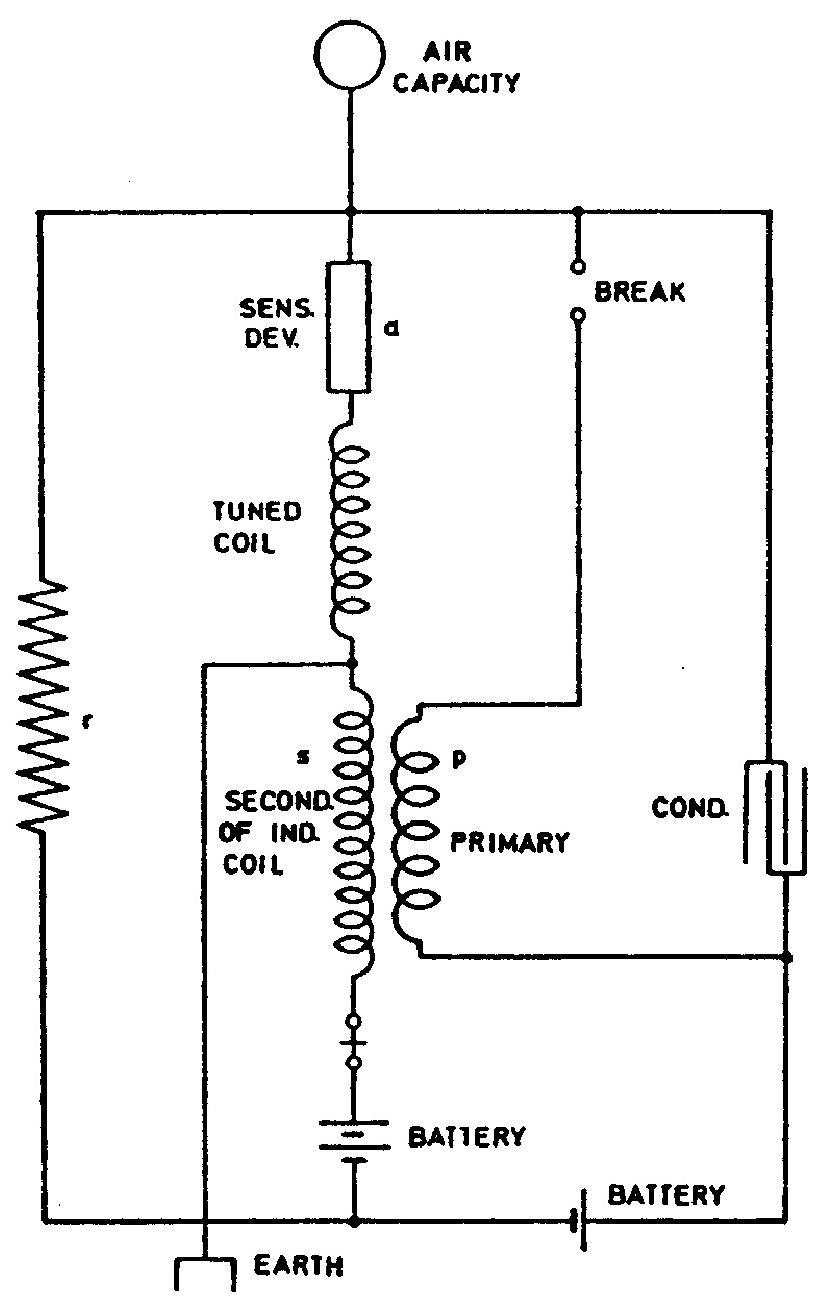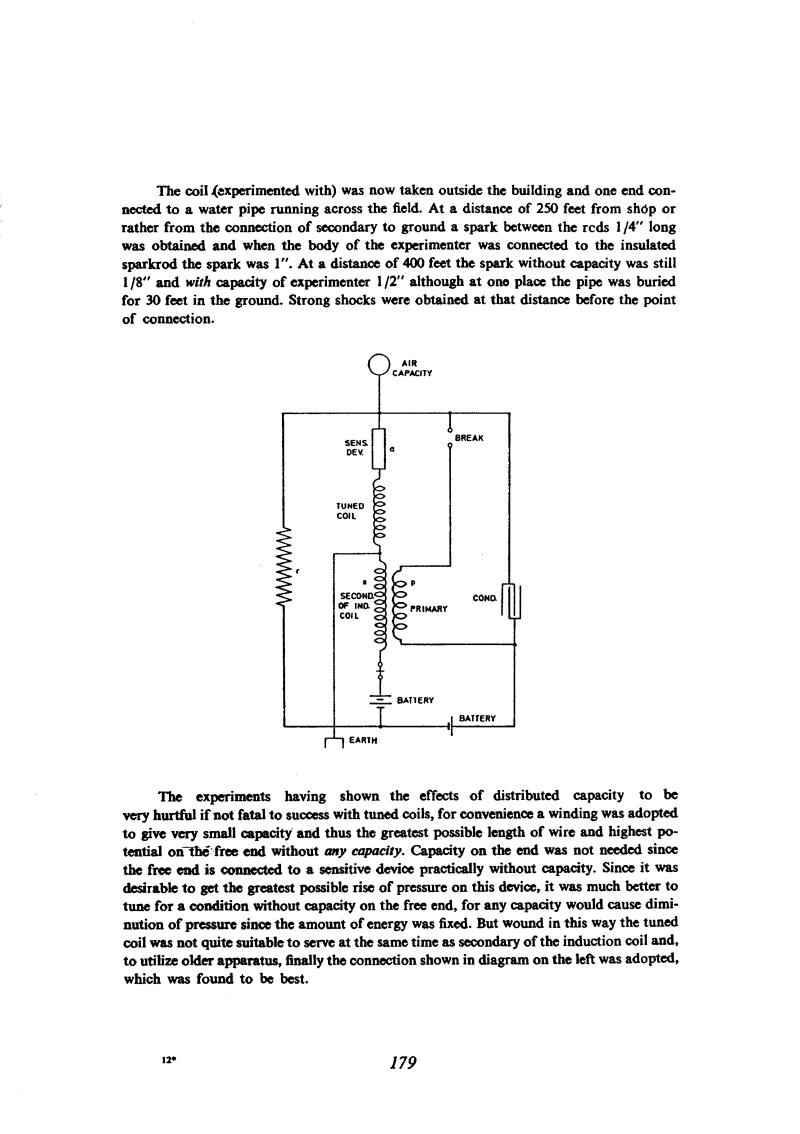
Nikola Tesla Books
The coil (experimented with) was now taken outside the building and one end connected to a water pipe running across the field. At a distance of 250 feet from shop or rather from the connection of secondary to ground a spark between the rods 1/4" long was obtained and when the body of the experimenter was connected to the insulated sparkrod the spark was 1". At a distance of 400 feet the spark without capacity was still 1/8" and with capacity of experimenter 1/2" although at one place the pipe was buried for 30 feet in the ground. Strong shocks were obtained at that distance before the point of connection.
The experiments having shown the effects of distributed capacity to be very hurtful if not fatal to success with tuned coils, for convenience a winding was adopted to give very small capacity and thus the greatest possible length of wire and highest potential on the free end without any capacity. Capacity on the end was not needed since the free end is connected to a sensitive device practically without capacity. Since it was desirable to get the greatest possible rise of pressure on this device, it was much better to tune for a condition without capacity on the free end, for any capacity would cause diminution of pressure since the amount of energy was fixed. But wound in this way the tuned coil was not quite suitable to serve at the same time as secondary of the induction coil and, to utilize older apparatus, finally the connection shown in diagram on the left was adopted, which was found to be best.
12*
179
Eccles, W. H. WIRELESS, Thornton Butterworth Ltd, London, 1933.
September 5
After a number of experiments, including a few outside the laboratory, Tesla once more concludes that parasitic capacity is very harmful, so he decides to try winding a coil to have minimum capacitance. Unfortunately he does not describe how this was done. In his desire to get the maximum possible voltage from the coil he went as far as thinking that it was best to have no capacity at the free terminal. From one aspect he was right (theoretically a coil gives the highest Q-factor with the least capacity in the resonant circuit), but without the âelevatedâ metal sphere the received signal was much weaker because the free terminal of the coil no longer had a monopole antenna. In the circuit which he in fact used he did not, however, go to such extremes. He added the âexperimentalâ coil but left the metal sphere (aerial capacity) connected to one end of the sensitive device.


